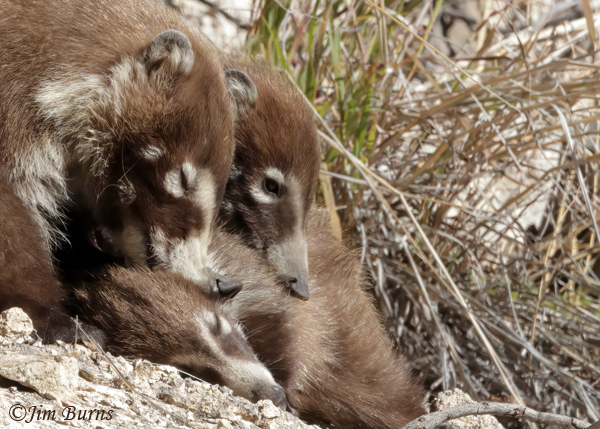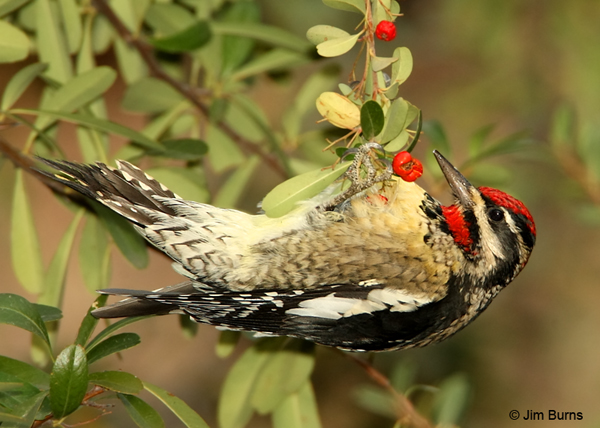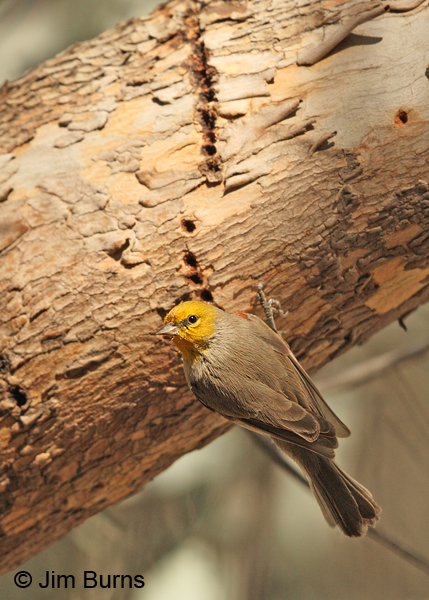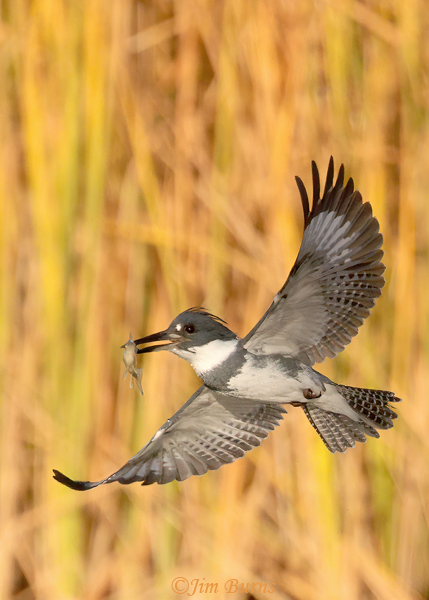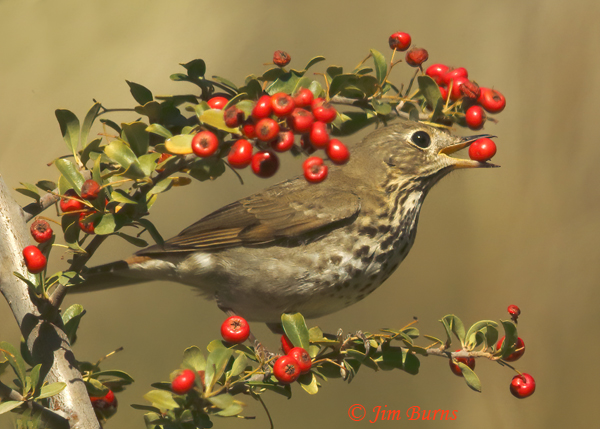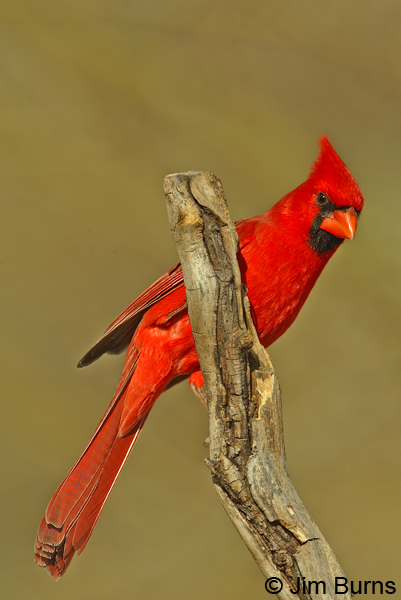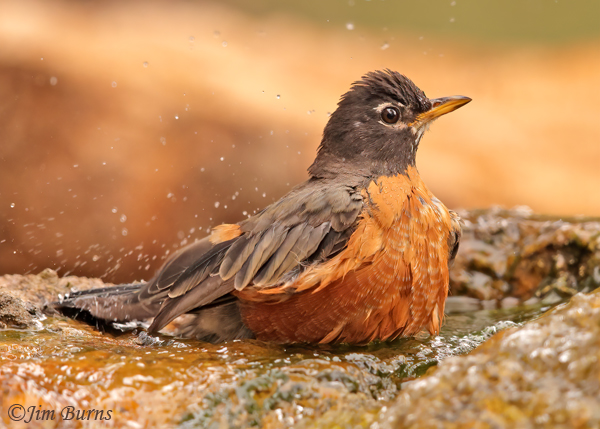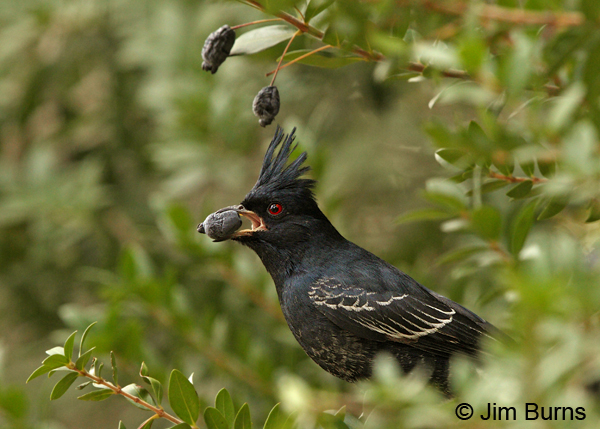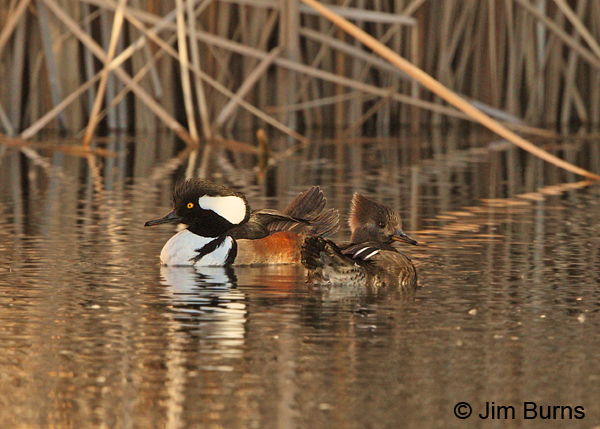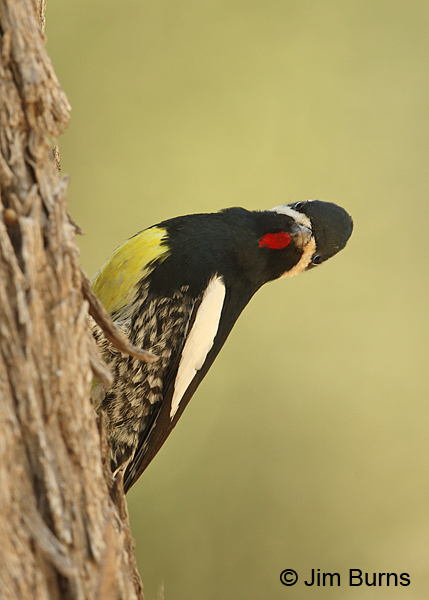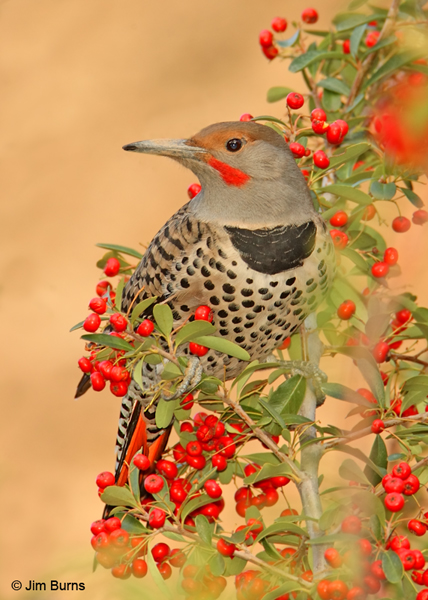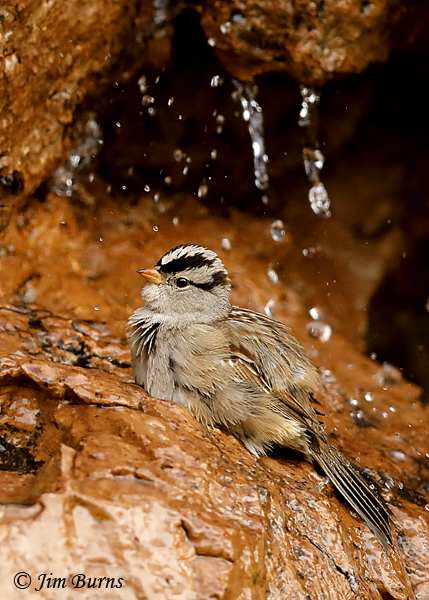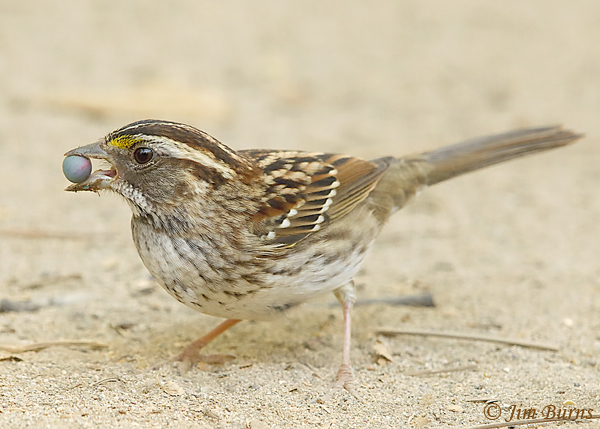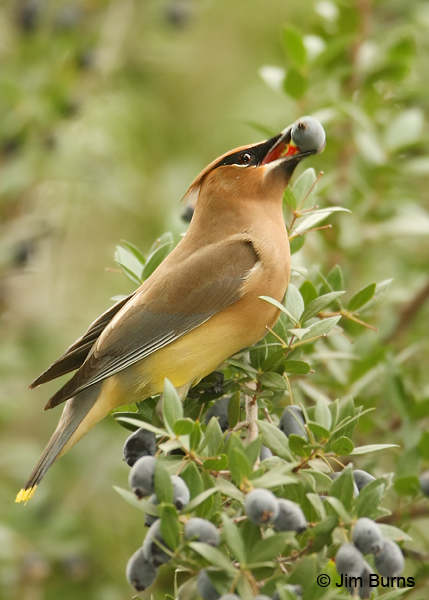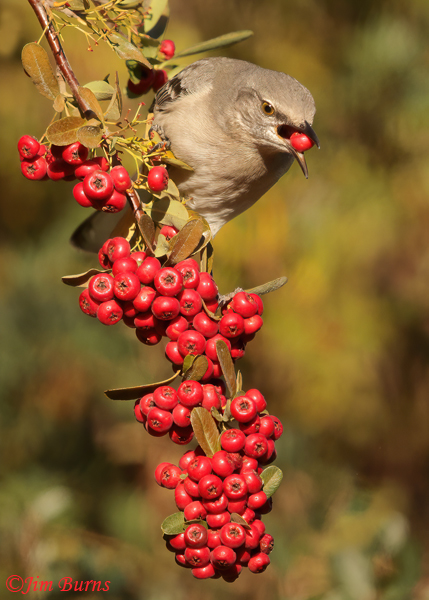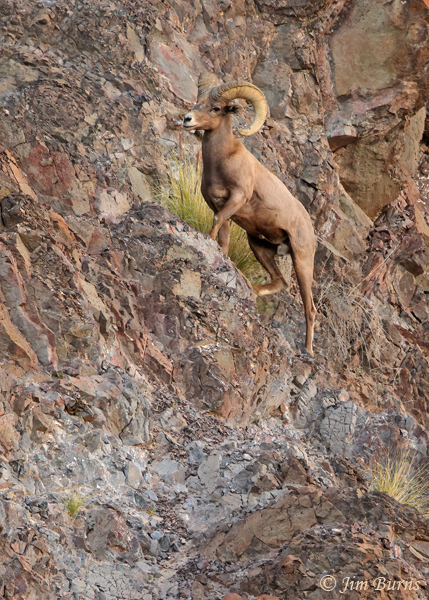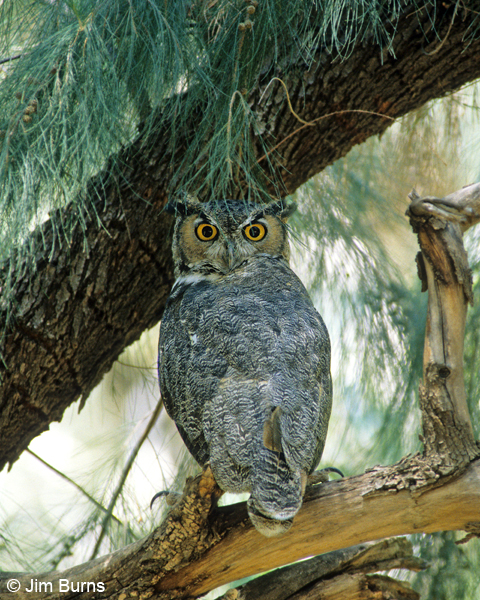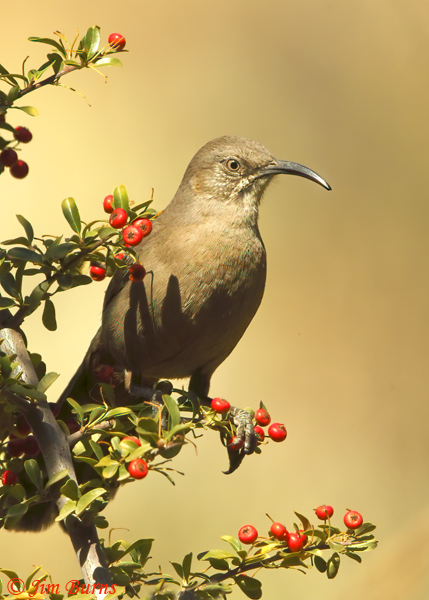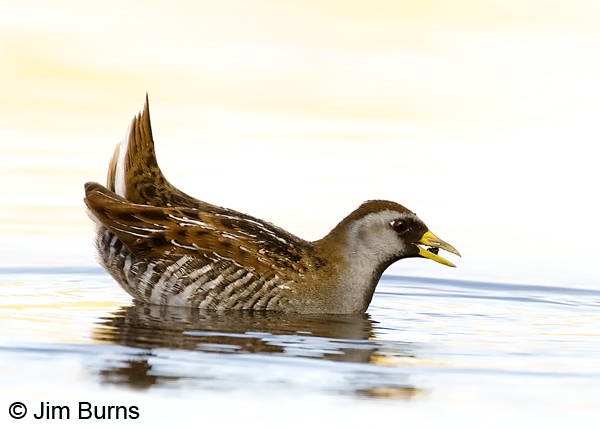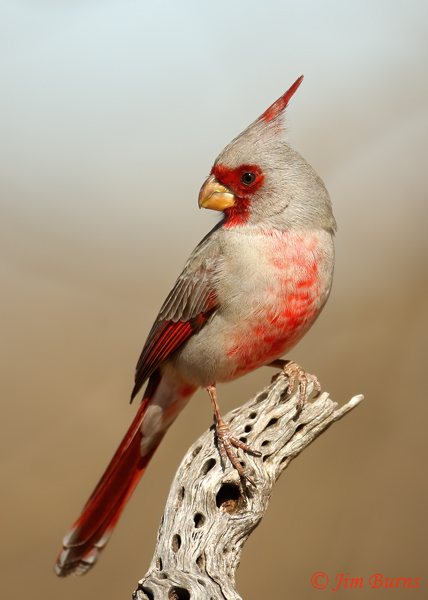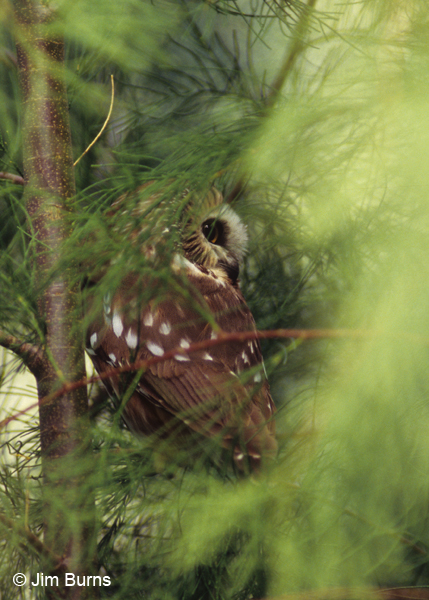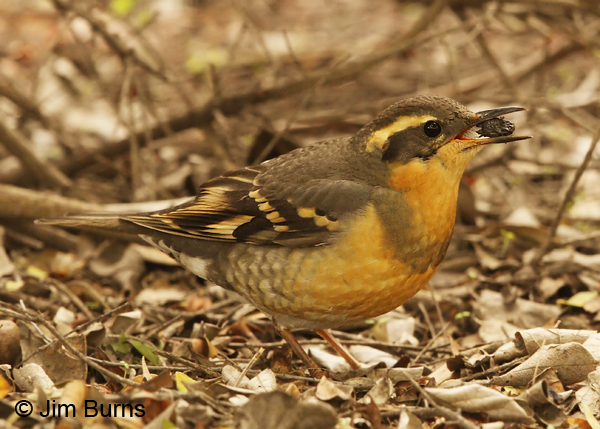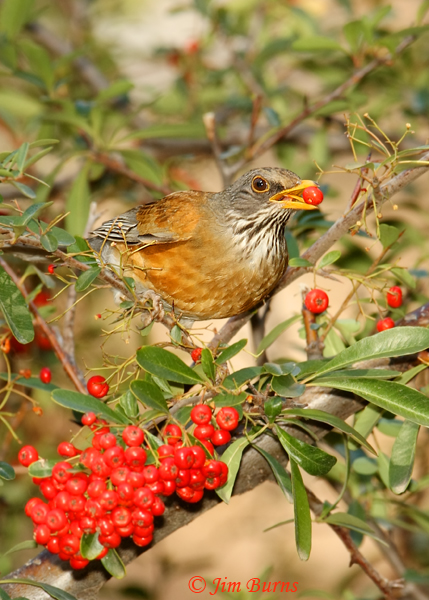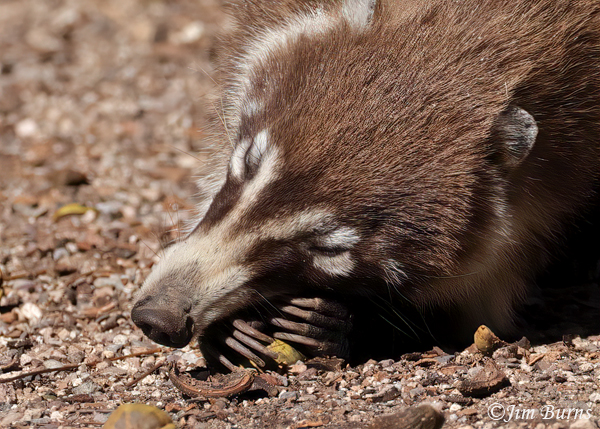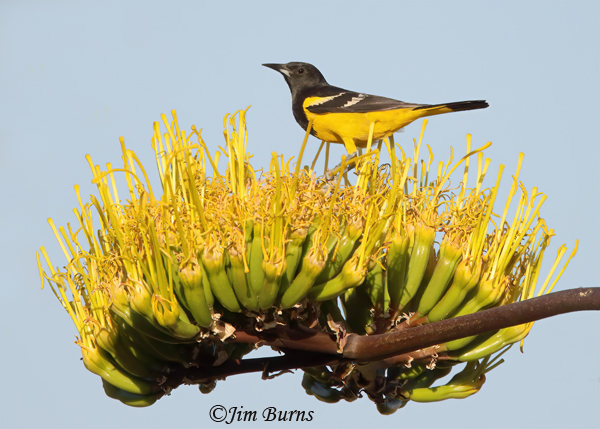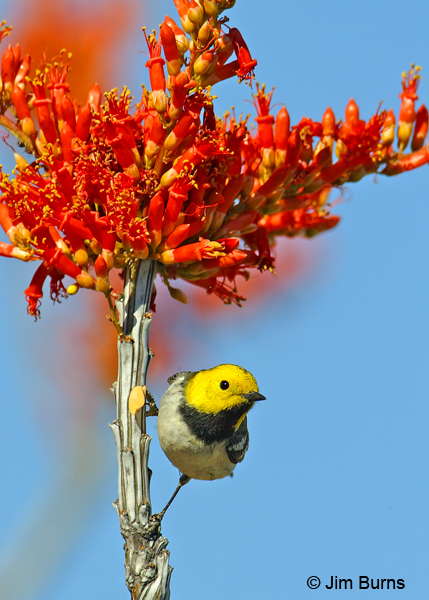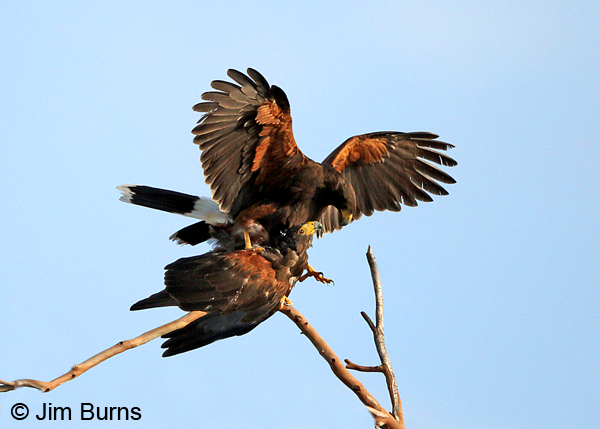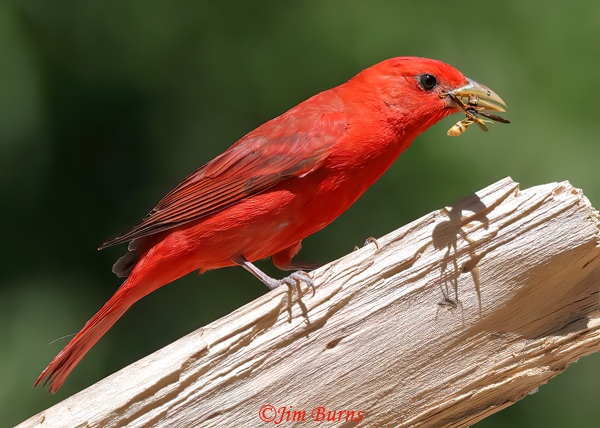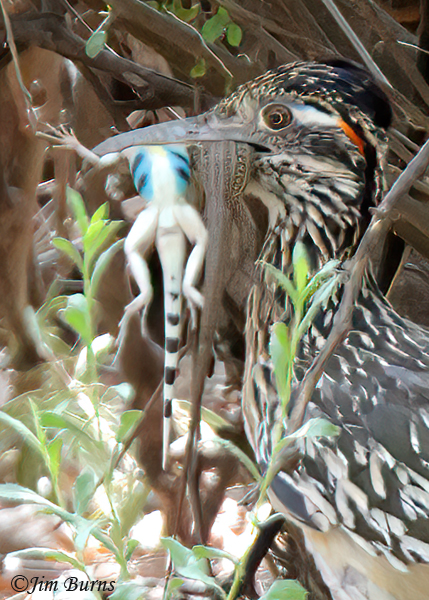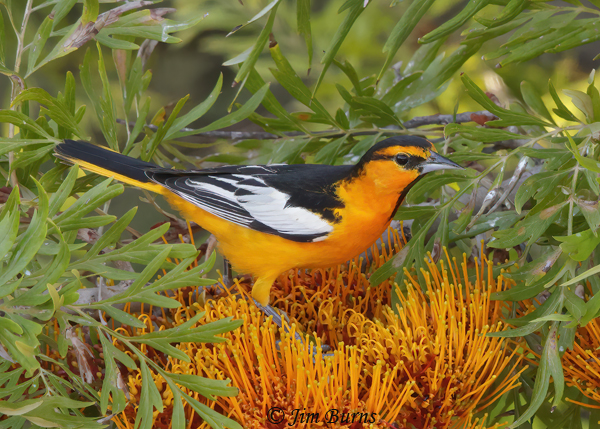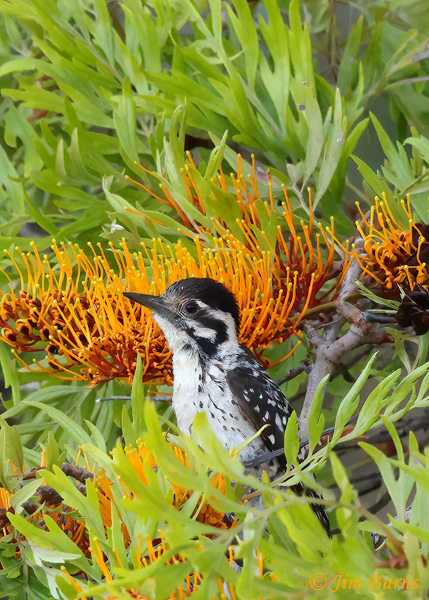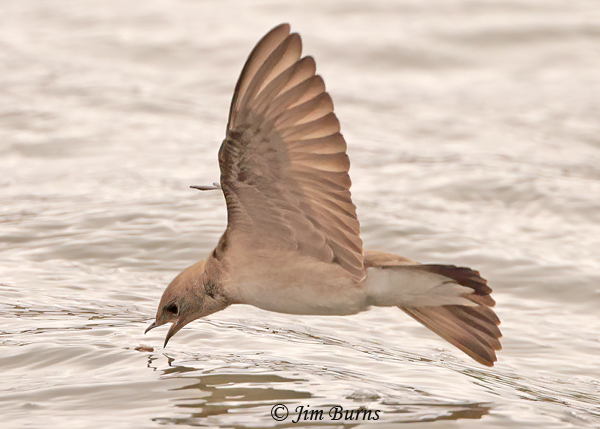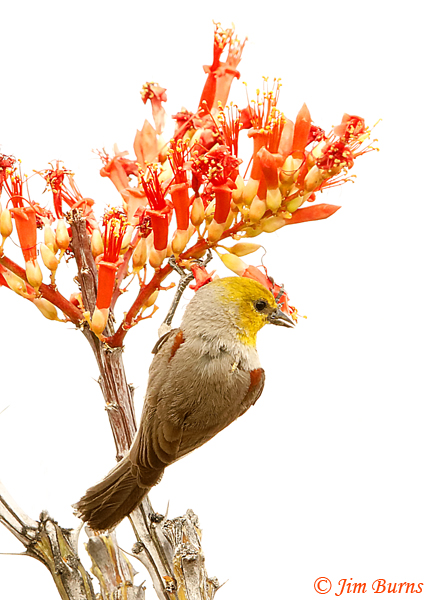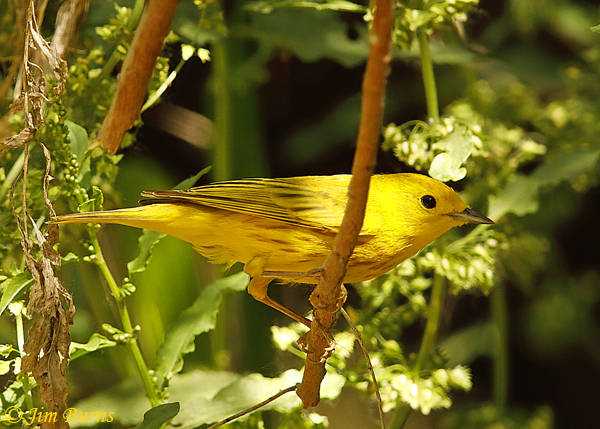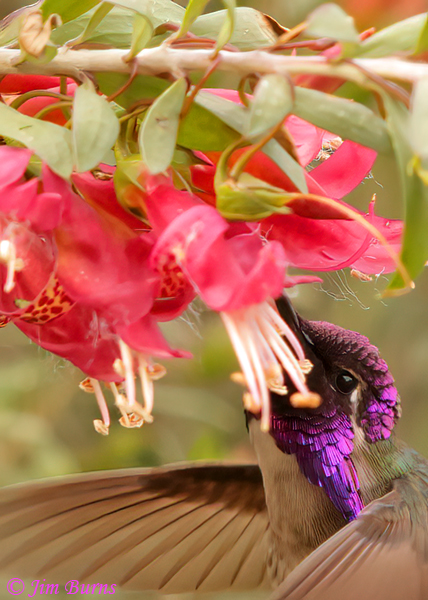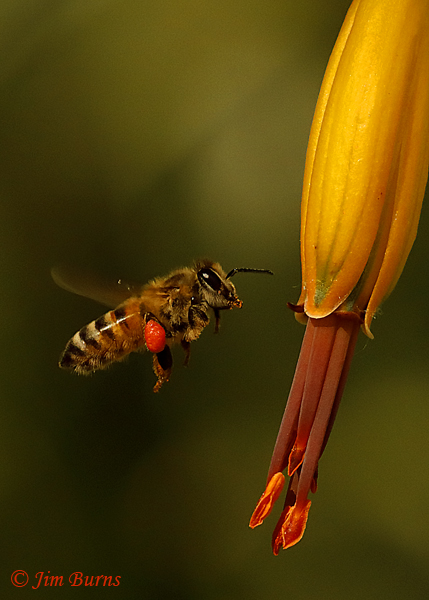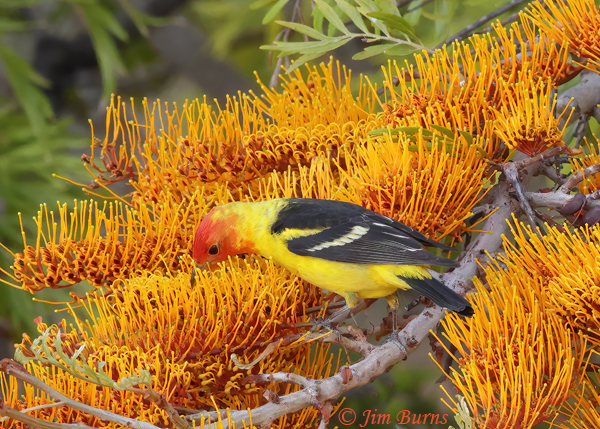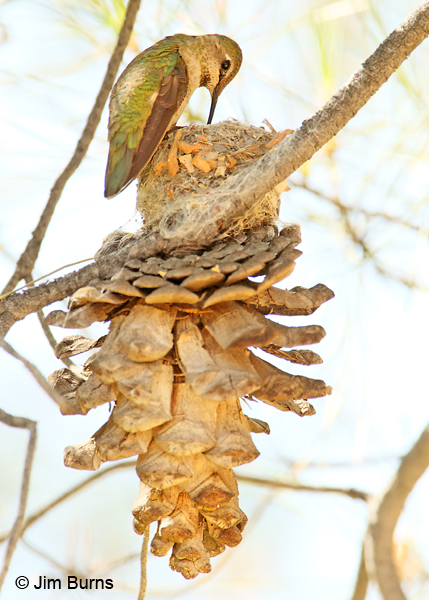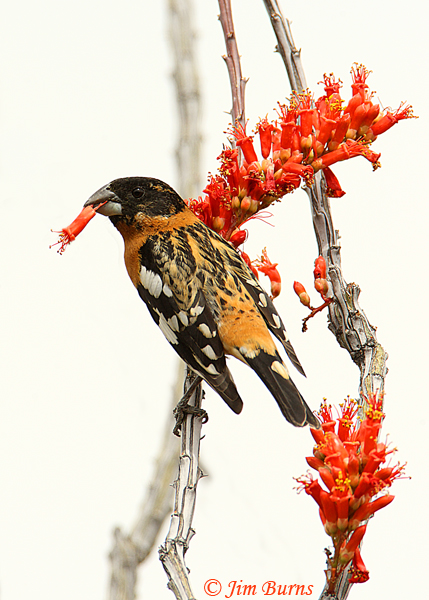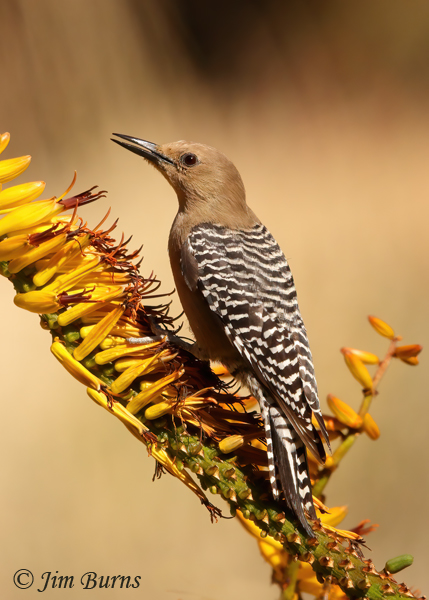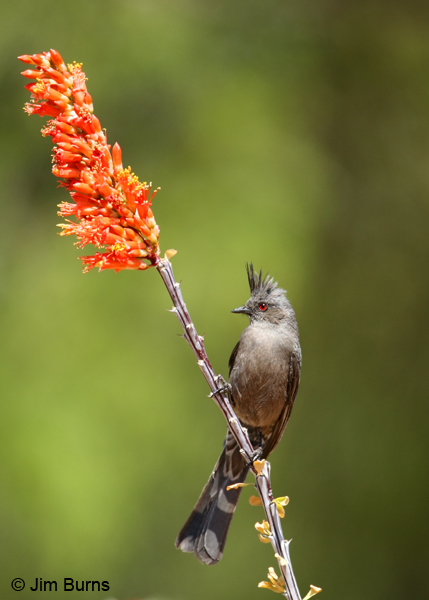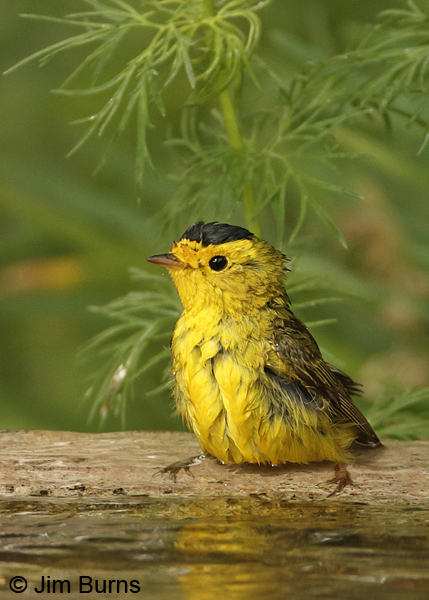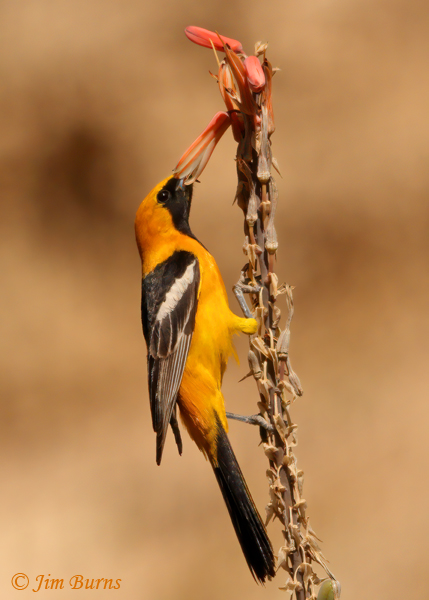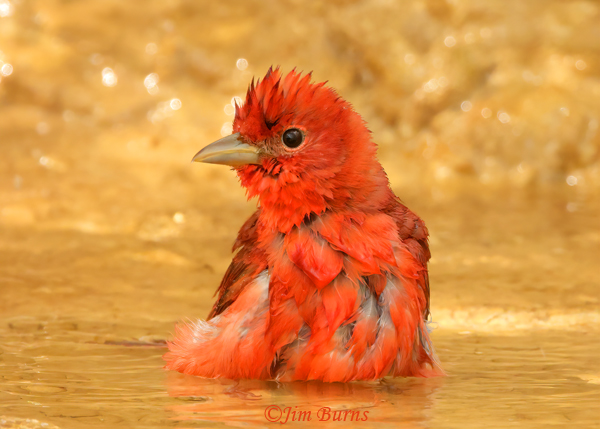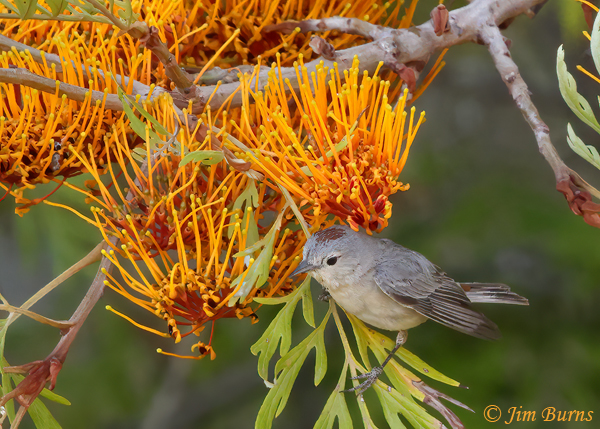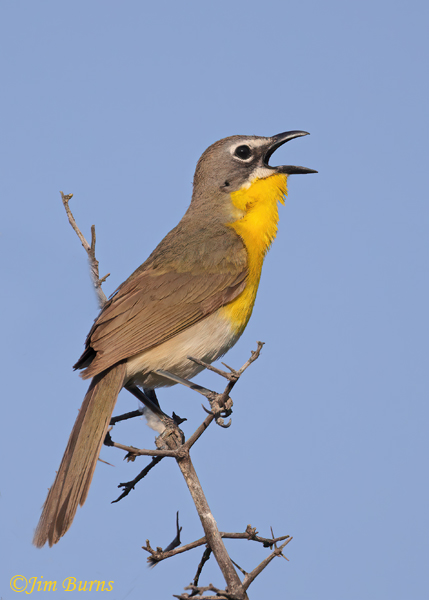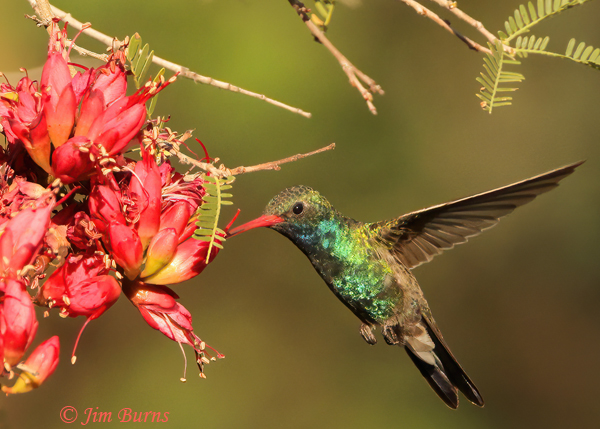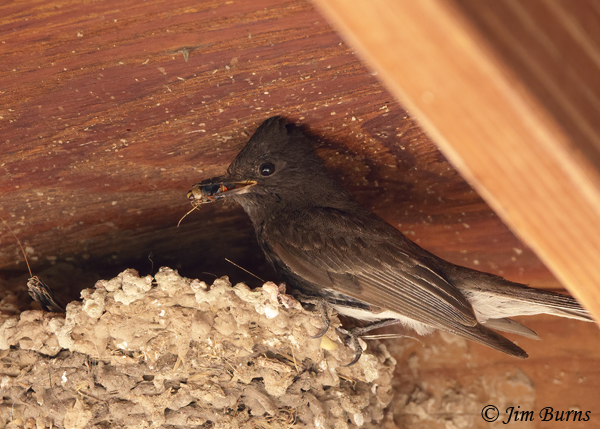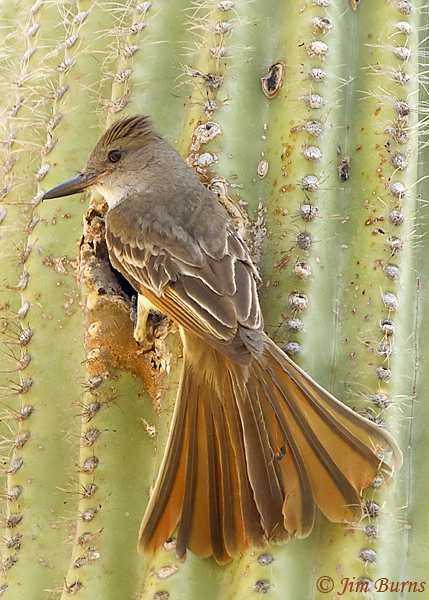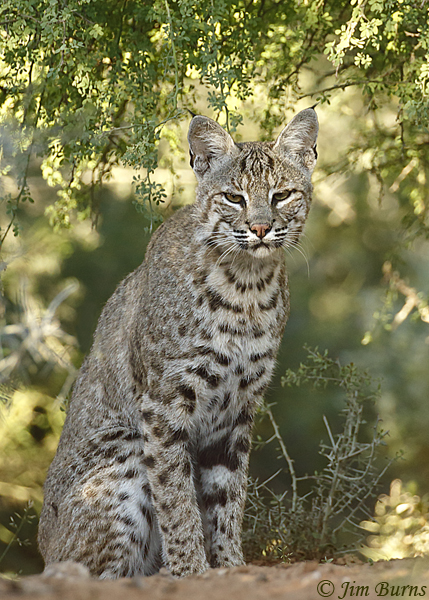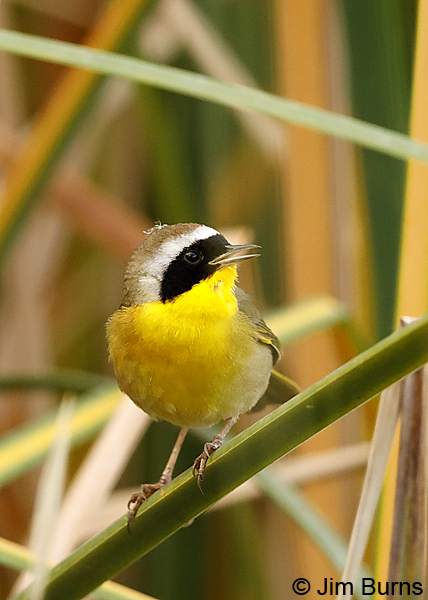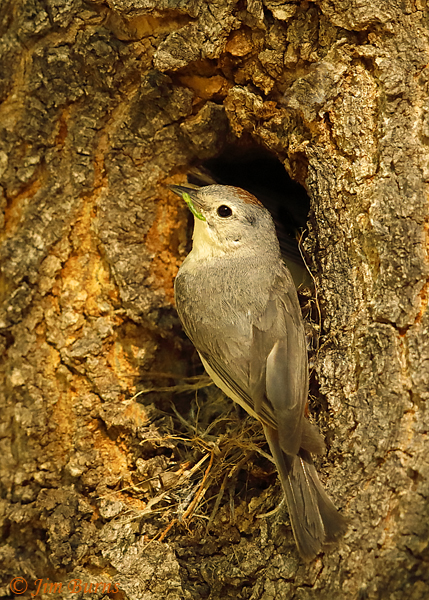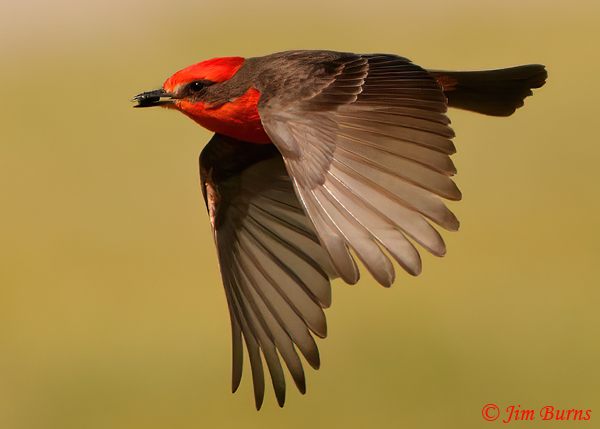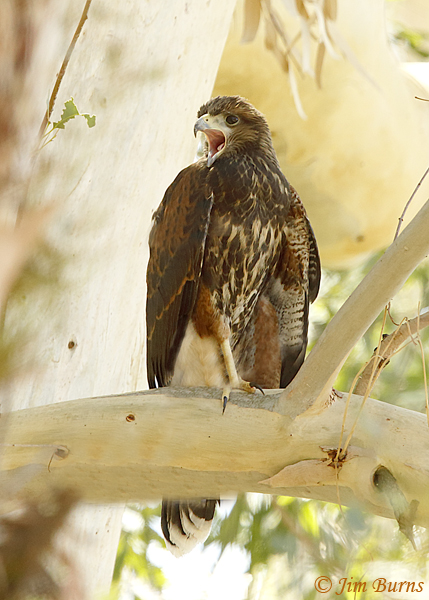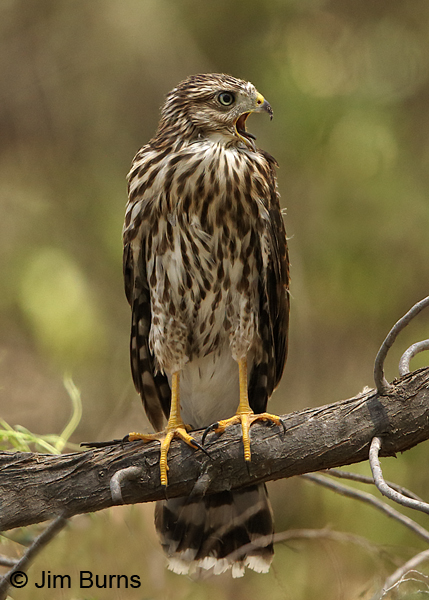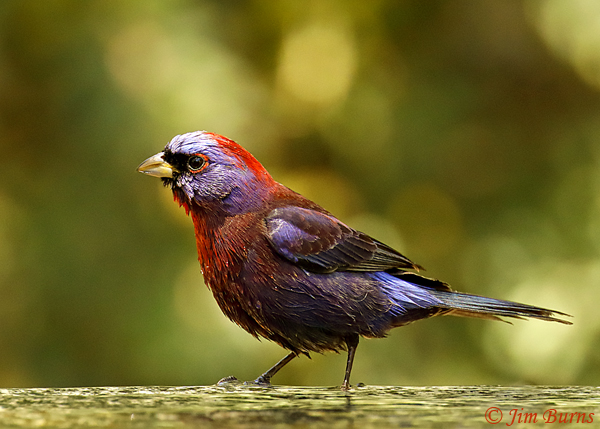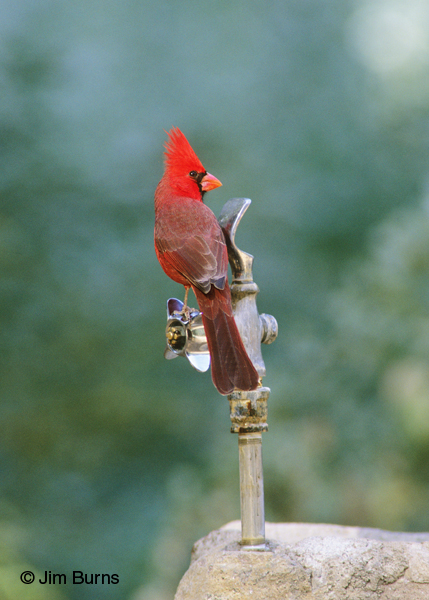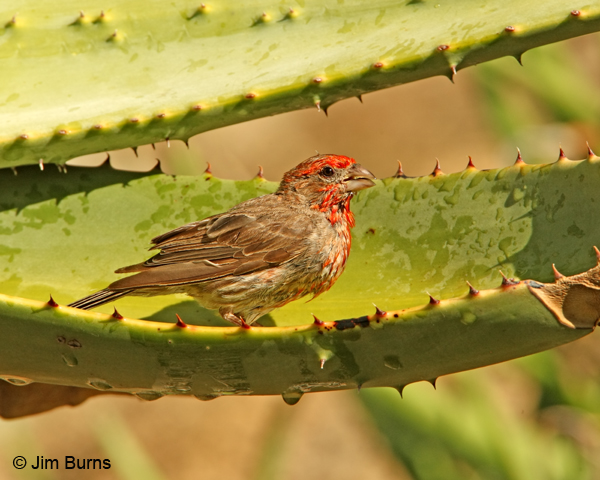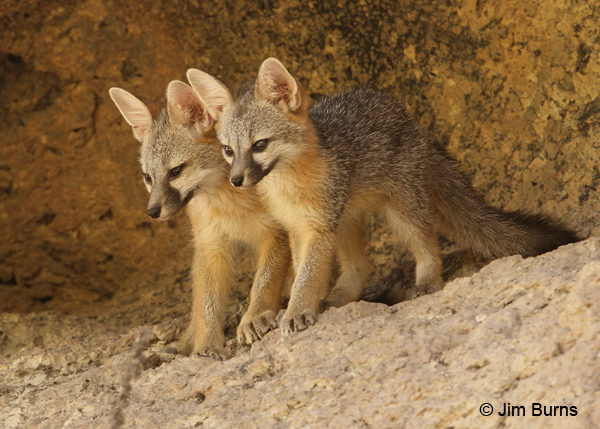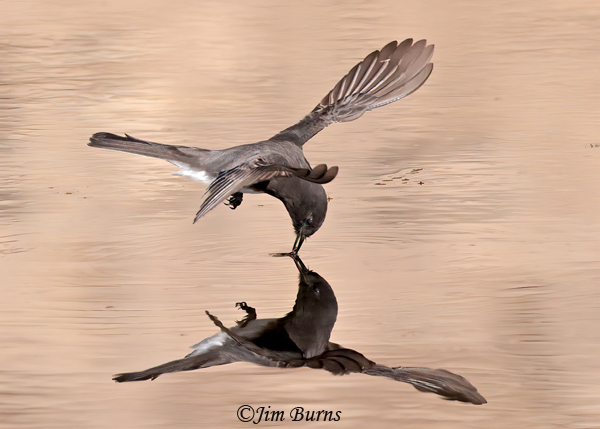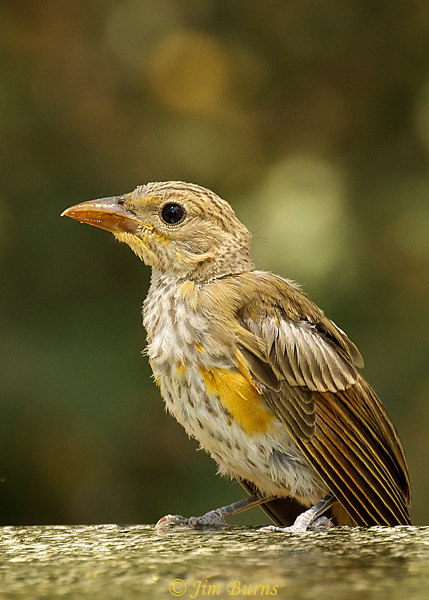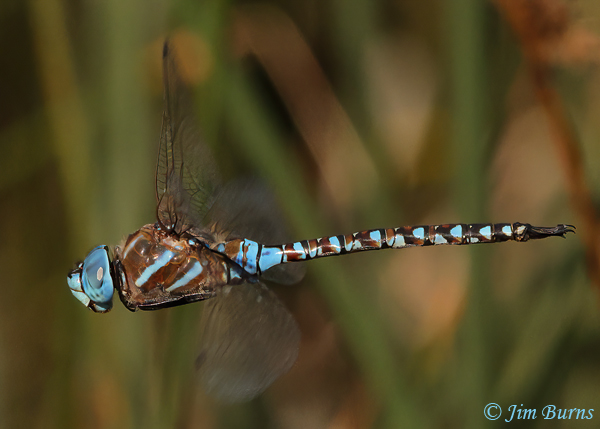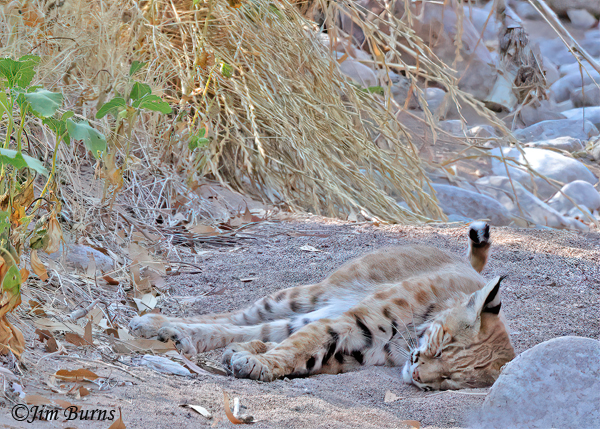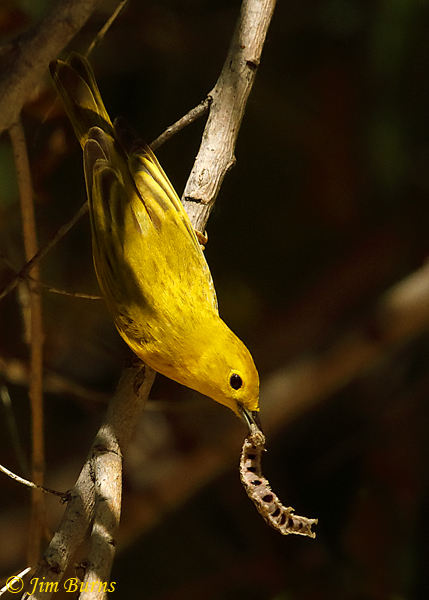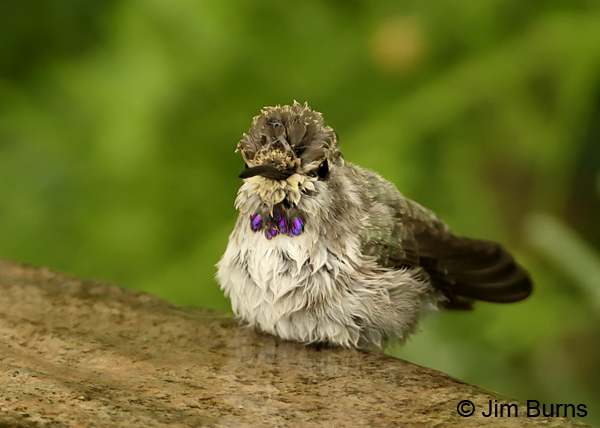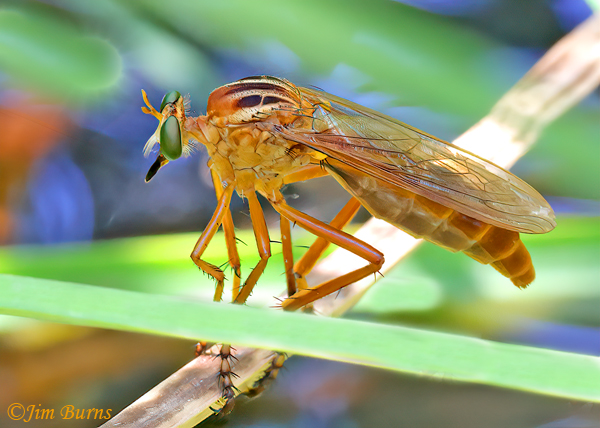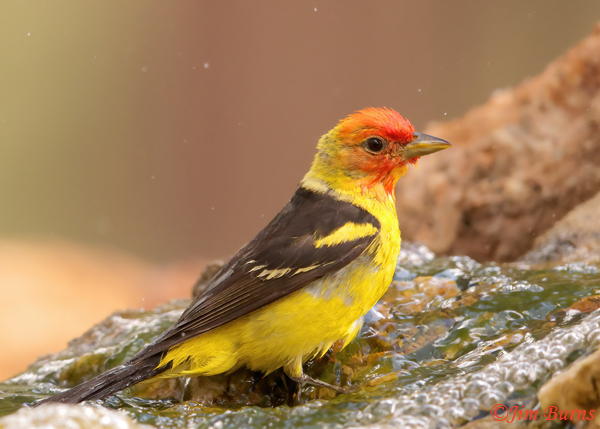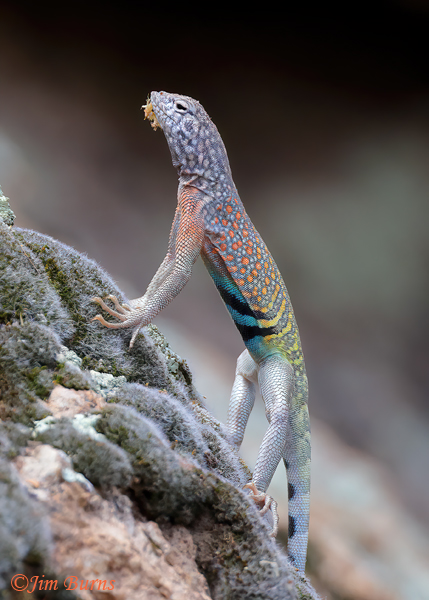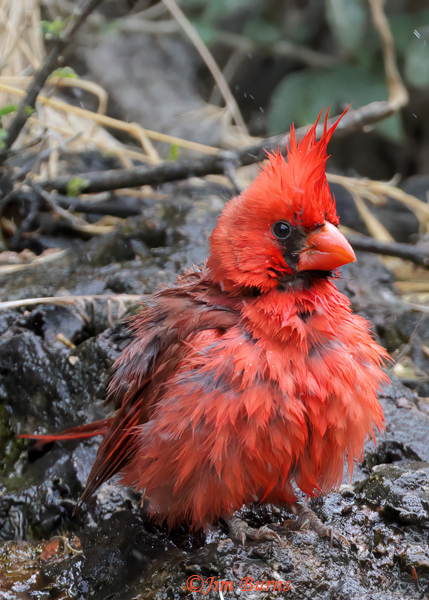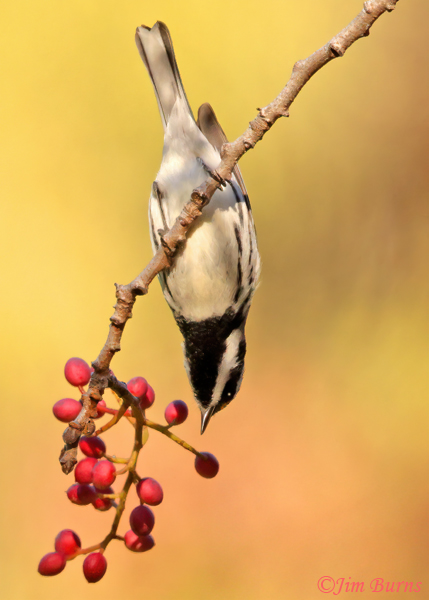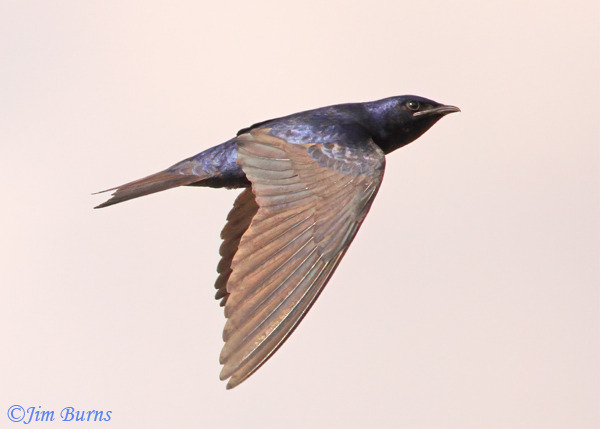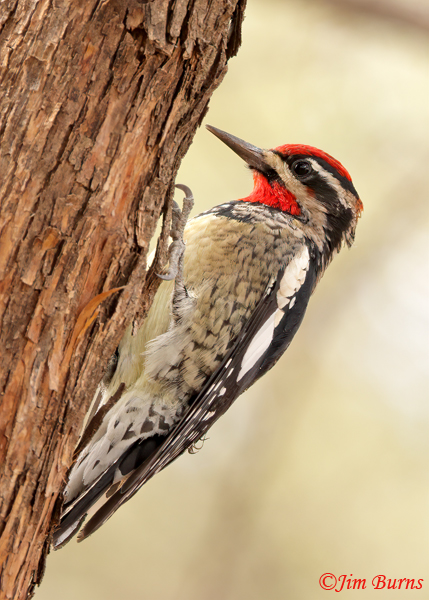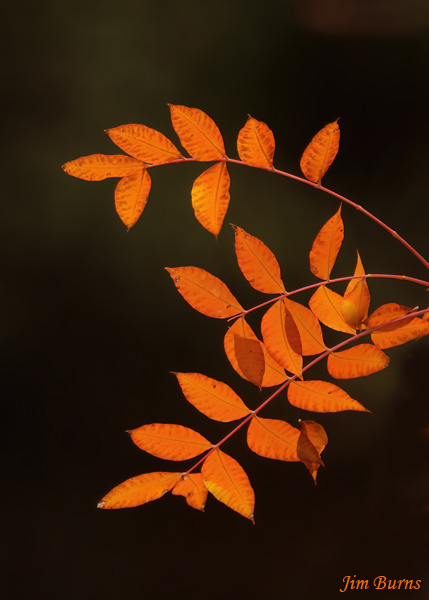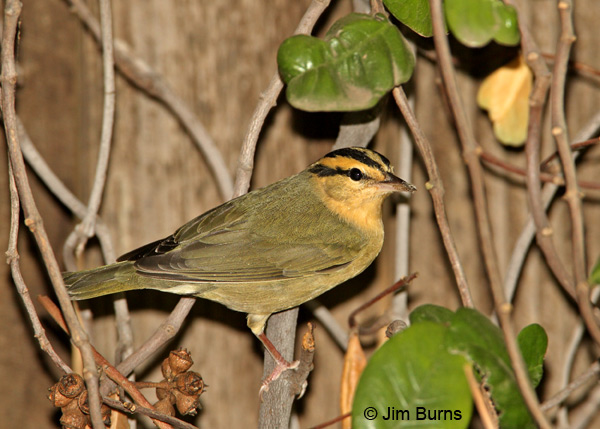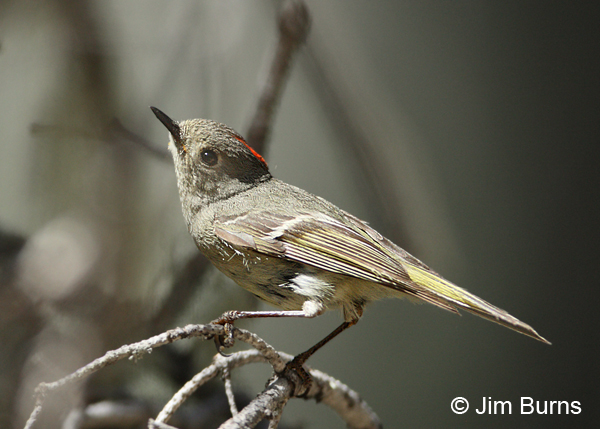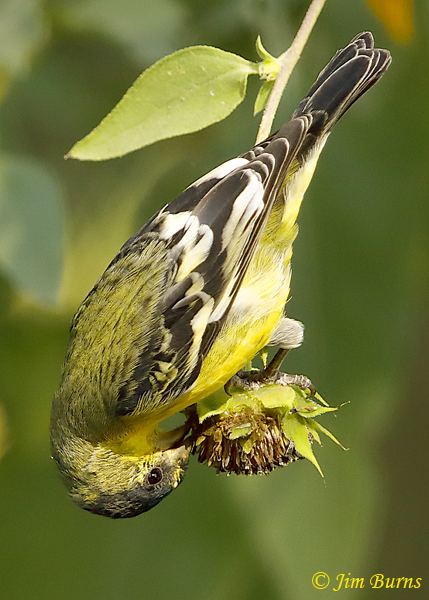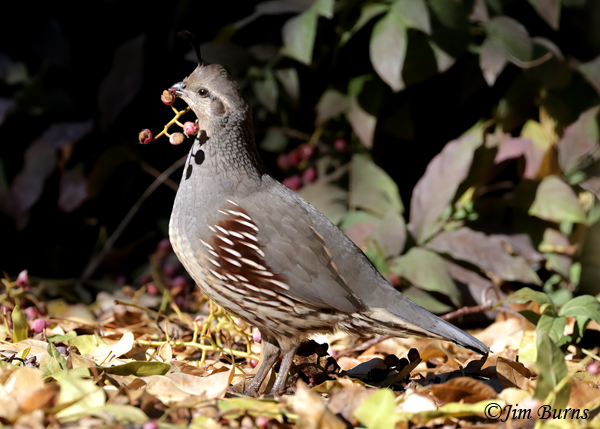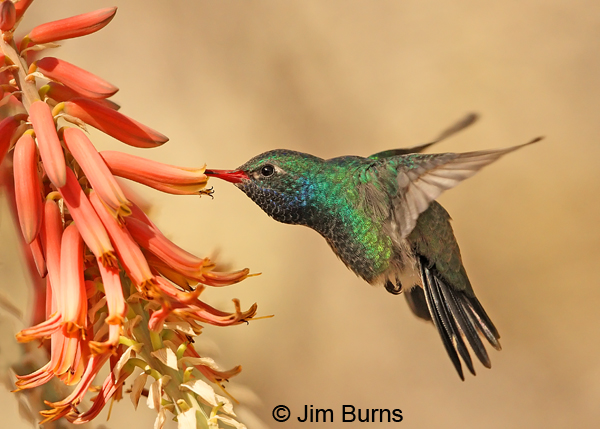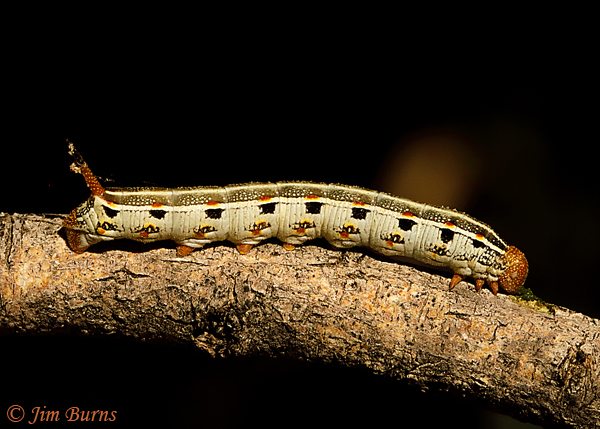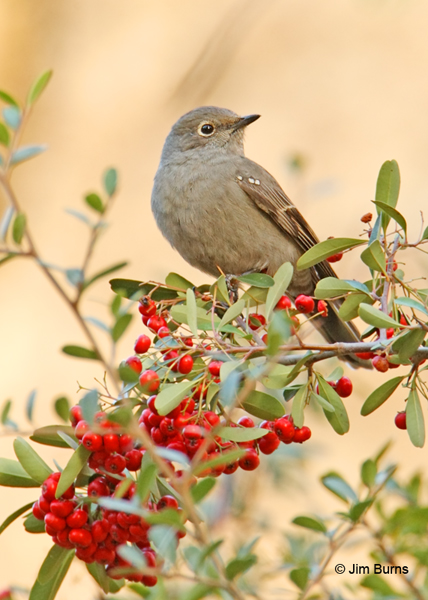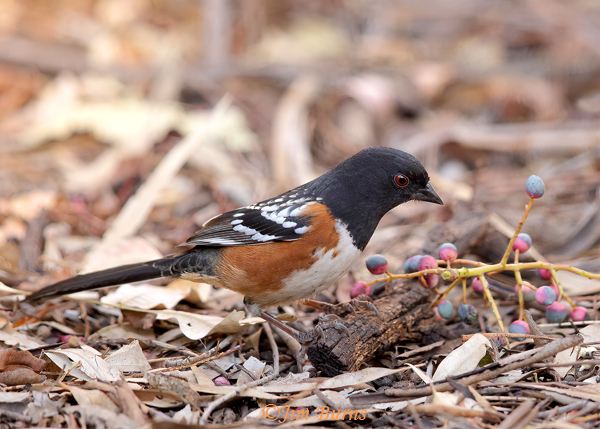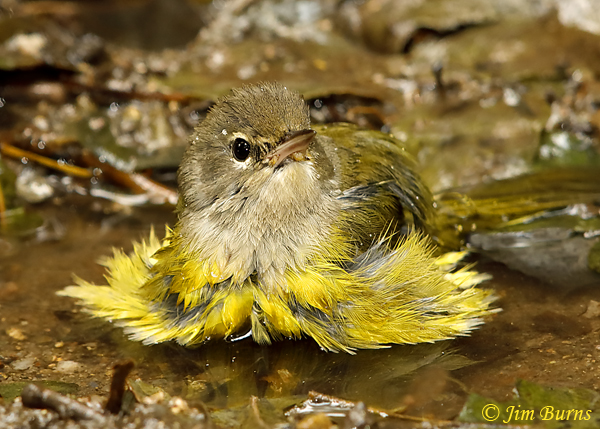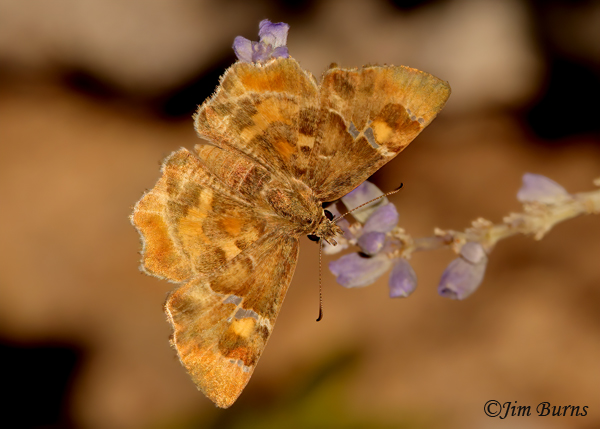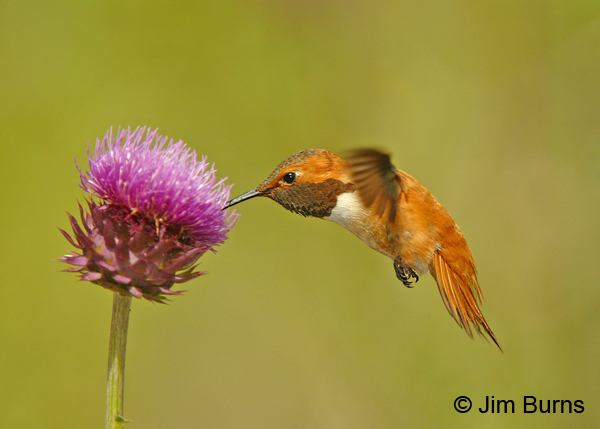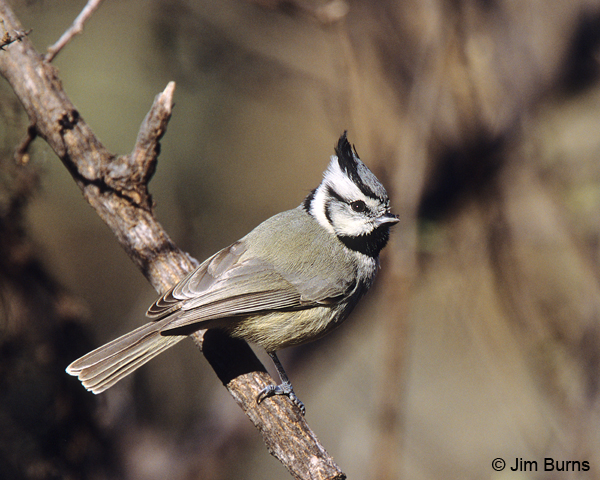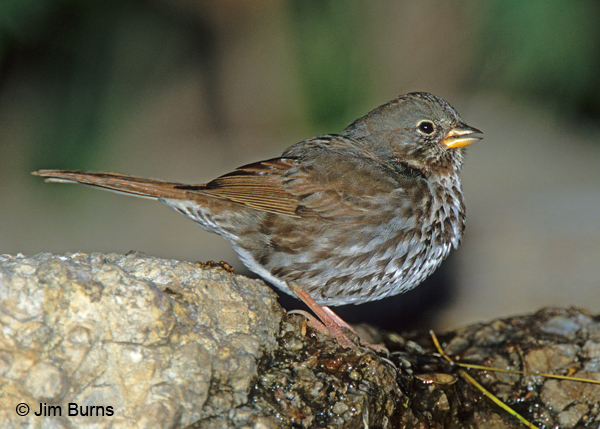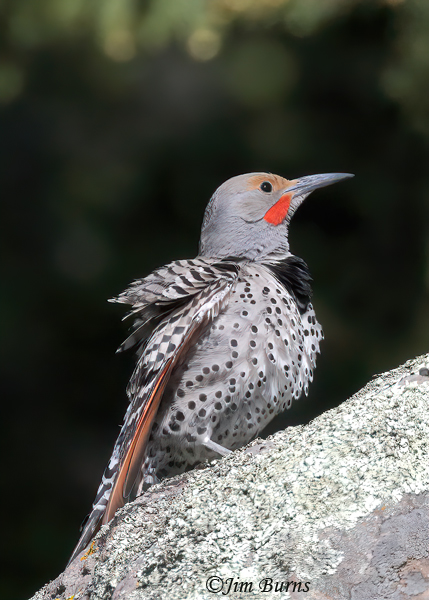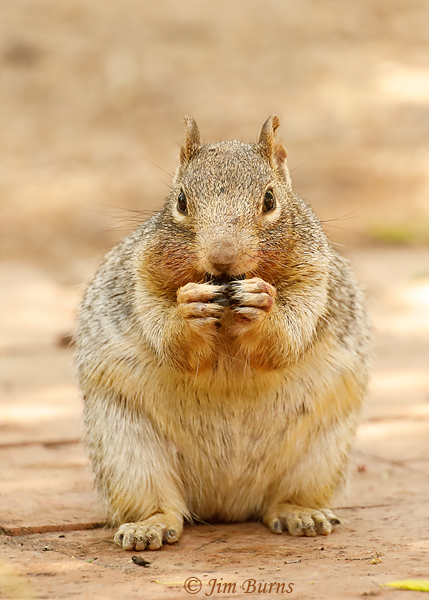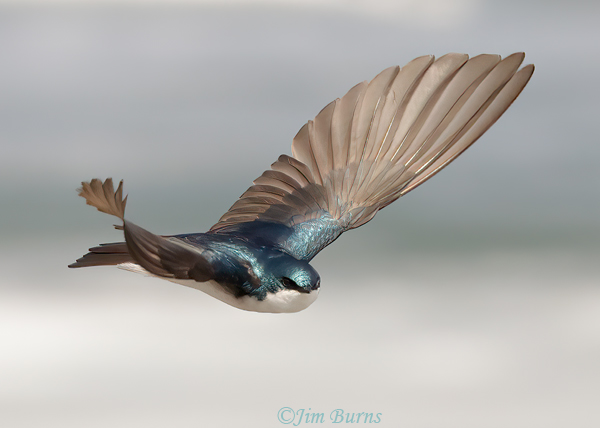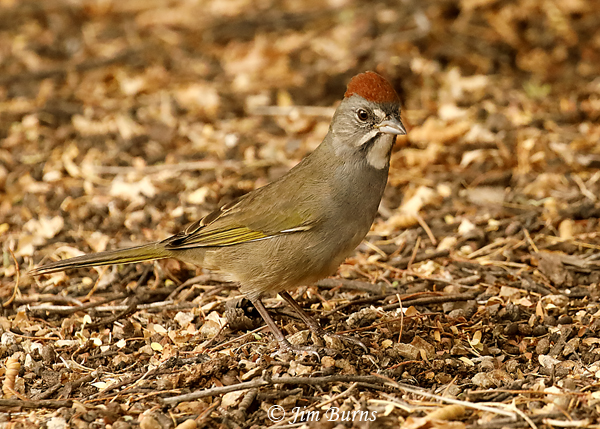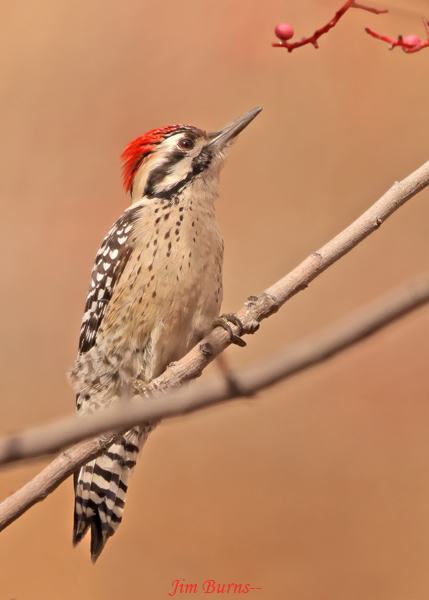This year as Boyce Thompson Arboretum celebrates its 100th anniversary, Deva and I would like to share 100 images from our forty years of birding and nature bathing in the beauty and serenity there. These images, all taken at Boyce Thompson over those forty years, represent a cycle of the arboretum’s four seasons and highlight the wonderful diversity of the wildlife we have encountered along it trails.
Opening the calendar year in winter gives us a sampling of the true Arizona “snowbirds,” the avian species that migrate south from North America’s northern latitudes and those that migrate altitudinally from Arizona’s mountains, coming for the warmth of the high desert and the berry crop offered by the fruiting trees in the canyon of Queen Creek. And as you’ll see, the arboretum also occasionally hosts some visiting mammals at that time of year as well.
Some winters bring roving bands of female White-nosed Coatimundi and their young of the year. Here a mama rests below Magma Ridge with two kits.
A Red-naped Sapsucker enjoys Pyracantha berries near the Herb Garden.
A Verdin, a permanent resident, opportunistically visits a row of the sapsucker's wells in the Eucalyptus Forest to glean sap and the insects attracted to it.
Ayer Lake often attracts a Belted Kingfisher to overwinter, and this male has captured a minnow.
Winter brings Hermit Thrushes that feast in the Pyracantha, also known as Firethorn, in the canyon.
Northern Cardinals, also permanent residents, are especially common around the Herb Garden, and the males never fail to delight visitors.
An American Robin, down from the mountains, bathes in Queen Creek.
An immature male Phainopepla feeds on a Myrtle berry near the Smith Building.
A spectacular Hooded Merganser drake and his mate dropped into Ayer Lake for a few winter days one year.
A beautiful male Williamson's Sapsucker spent one winter in the Pine Loop.
Northern Flickers, the red-shafted variety, are common in winter in the Herb Garden where the male's red moustache complements the Firethorn berries.
Every winter brings flocks of White-crowned Sparrows to the arboretum. Here, one bathes at The Grotto in the Wallace Garden.
And every few years a White-throated Sparrow shows up with the White-crowneds. This one, a juvenile, was found gleaning Pistachia berries in the Picnic Area.
Occasionally a flock of Cedar Waxwings appears in winter. This one is enjoying the Myrtle berries near the Smith Building.
This Northern Mockingbird, another permanent resident, was photographed in Pyracantha in the Children's Garden and the image became our Christmas card one year.
This Clark's Nutcracker, uncommon even in the White Mountains, surprised visitors one winter when it was found working pine cones in the Demonstration Garden.
Desert Bighorn Sheep are an unexpected sight on the cliffs above the High Trail.
Great Horned Owls live at Boyce Thompson, and winter is when they become territorial. This one was photographed in the Pine Grove.
Some winters bring Crissal Thrashers down from the mountains above Superior where they breed.
One winter this Sora was seen for several days along the edges of Ayer Lake.
Pyrrhuloxias, the so-called desert cardinal, are seen along the creek at the far west boundary of the arboretum.
A Northern Saw-whet Owl famously spent a winter roosting in tamarisk along Queen Creek.
A female Varied Thrush, a winter visitor from the Pacific Northwest, enjoys a Myrtle berry near the Herb Garden.
Rufous-backed Robins from Mexico often disperse north in winter and can be found at the Pyracantha in the canyon.
An adult female White-nosed Coati opens a fallen pecan in the Herb Garden.
Spring is Boyce Thompson’s most eagerly awaited season, not necessarily by birders, but certainly by general nature enthusiasts who visit for the annual plant sale and tour the grounds reveling in the beauty of all the blossoming trees and flowers. Birders visit at this season for spring migrants, primarily the warblers, tanagers, and orioles whose brilliant plumage adds to the impressive panoply of colors. Here in Arizona migration is more protracted in spring than in the fall and tantalizes birders with the hope that something special could show up at any time.
A returning Scott's Oriole male visits a blooming Century Plant on the Curandero Trail above the Visitors Center.
This male Hermit Warbler on its journey north visits an Ocotillo on the Baja Desert Trail.
Spring is in the air for these Harris's Hawks, copulatiing near their nest on the Pine Loop.
Summer Tanagers are wasp specialists, and this stunning male has captured an Apache Paper Wasp near Queen Creek.
Greater Roadrunners are early nesters. This one hurries across the Picnic Area with two Zebra-tailed lizards it has caught.
This Gopher Snake was originally seen predating a Hooded Oriole nest in the Demonstration Garden.
Bullock's Orioles nest in the arboretum where this male forages for insects in Silky Oak blossoms along Queen Creek below the High Trail.
Permanent residents like this female Ladder-backed Woodpecker also use the Silky Oaks during the springtime.
A migrating Northern Rough-winged Swallow snatches an aquatic insect from the water of Ayer Lake.
The subdued colors of a tiny, resident Verdin perfectly accent a flowering Ocotillo in the Chihuahuan Desert Exhibit.
A male Yellow Warbler feeds along the Queen Creek Riparian area.
A male Costa's Hummingbird gleans insects and nectar from Soapberry flowers near the Yucca Forest in the Wallace Garden.
Honey Bees collect pollen at the orange aloe outside the Demonstration Garden.
This male Townsend's Warbler stops to bathe in Queen Creek on its migration to the Pacific Northwest.
The Silky Oaks along Queen Creek at the edge of the Pine Loop attract a breeding plumaged male Western Tanager.
One year an Anna's Hummingbird famously placed her nest atop a pine cone in the Demonstration Garden.
Overcast skies pop the colors of a male Black-headed Grosbeak feeding on Ocotillo blooms near the Weaver's Needle Lookout.
A female Gila Woodpecker breakfasts in the aloes west of the Wing Memorial Herb Garden.
Migrants like this male Lazuli Bunting often stop to drink at the Aboriginal Seep above the Eucalyptus Forest.
Phainopeplas nest at the arboretum and, like this female, often feed on the Ocotillos in the Sonoran Desert Exhibit.
A male Wilson's Warbler bathes at a water feature in the Demonstration Garden.
The gorgeous male Hooded Orioles, like this one on an orange aloe in the canyon, always draw exclamations from first time visitors.
An Orange-crowned Warbler flits through the vegetation along Queen Creek.
Shallow pools along Queen Creek often attract returning nesters, like this dazzling male Summer Tanager, to drink and bathe.
The arboretum's nesting Lucy's Warblers are often seen in the Silky Oaks in the Pine Loop.
Just as Boyce Thompson’s summer hours change to attract visitors anxious to escape the Phoenix heat, early mornings also mark peak activity in the daily lives of the arboretum’s diverse wildlife. Summer is the busiest time of the year for resident nesting birds and other animals as they establish territories, build nests, and fledge young, and all seek water to drink and bathe in the heat. Any water source at this season is precious, and irrigation puddles, shallow pools in Queen Creek, and all the arboretum’s many water features become good places for animal sightings.
A Yellow-breasted Chat, one of the last of the arboretum's summer migrants to return, sings on territory near The Grotto.
The late blooming Karoo Boer-Bean Tree blossoms on the Main Trail compete with the vibrant colors of a visiting male Broad-billed Hummingbird.
A pair of Black Phoebes usually nest near Ayer Lake, often making their mud nest in the rafters of the cabana along the trail there.
A Brown-crested Flycatcher rests at the opening to its nest cavity in a Giant Saguaro near the Visitors Center.
Bobcats are sometimes seen passing through the arboretum, and one year a pair had young in a den in the rocks south of the Cactus Succulents Garden.
Common Yellowthroats sing from the reeds around Ayer Lake.
Lucy's Warblers are one of only two warbler species that nest in tree cavities. This is a male with a caterpillar for nestlings in the Demonstration Garden.
Vermilion Flycathers nest in the Picnic Area, and here a male brings an insect for nestlings.
This juvenile Harris's Hawk cries for food just weeks after fledging from its nest in the Pine Loop.
Cooper's Hawks nest annually in the arboretum. This juvenile Coop is calling for food from a Eucalyptus Tree behind the Drover's Wool Shed.
A male Varied Bunting displays its seldom seen array of wonderful reds and blues as it bathes in the infinity pool near the Smith Interpretive Center.
This male Northern Cardinal was caught drinking at the fountain in the Picnic Area.
Along the Main Trail in the canyon this male House Finch bathes in a pool in an aloe leaf left by an overnight summer monsoon rain.
Gray Fox pups pose near their den in the rocks along the Main Trail in the canyon.
A Black Phoebe snatches an insect from Ayer Lake to take to nestlings.
This fledgling Summer Tanager drinks and bathes at the infinity pool near the Smith Interpretive Center.
In summer dragonflies like this beautiful male Blue-eyed Darner ply the waters of Ayer Lake.
A sleepy Bobcat kit rests along the dry bed of Queen Creek.
A male Yellow Warbler catches a caterpillar for its nestlings in a cottonwood along the Queen Creek Riparian area.
The signature onomatopoeic song of a Canyon Wren rises up from The Grotto in the Wallace Garden.
On hot summer afternoons the infinity pool near the Smith Interpretive Center draws many hummingbirds. Here an immature male Costa's cools off with a bath.
The reedbeds around Ayer Lake are a summer home to this colorful robber fly, Diogmites neoternatus.
A stunning male Western Tanager bathes at a bubbling ripple in Queen Creek.
A rainbow of colors can be seen on this male Greater Earless Lizard, alert on the rocks below the Picket Post House.
The Grotto in the Wallace Garden is a favorite place to bath for residents like this preening, fluffed out male Northern Cardinal.
Just as it is in many other parts of the country, fall foliage is a major attraction at Boyce Thompson, and it may be the season most anticipated by serious birders as well. Although autumn migration begins for some of Arizona’s resident species at the end of the summer, it carries over well into September and October, and these are the months almost all southbound species are on the move, winter visitors may arrive with the first cold snap farther north, and a smorgasbord of fruit is starting to form. By the time fall color peaks around Thanksgiving, both avian and human “snowbirds” have arrived, and the overwintering birds will add their colors to the arboretum’s visual feast.
The Pistacia Grove, with its trove of fall berries, attracts migrants like this Black-throated Gray Warbler.
Late blooming Lantana in the Demonstration Garden always hosts late season butterflies like this Western Tiger Swallowtail.
A male Purple Martin headed for South America hawks insects over Ayer Lake.
Red-naped Sapsuckers, like this male on a Mesquite in the Picnic Area, are always the first non-resident woodpeckers to arrive in fall.
The trees and vines growing where Queen Creek flows through the canyon get their fall colors first because of the cooler nights there.
This Worm-eating Warbler at the waterfall in the Demonstration Garden was one of the most unexpected fall migrants ever recorded at the arboretum.
The first wave of avian snowbirds always includes several Ruby-crowned Kinglets in the Queen Creek Riparian.
A male Lesser Goldfinch coming out of breeding plumage feeds at the Sunflowers in the Demonstration Garden.
A Hooded Skunk takes a rare, late afternoon stroll across the Picnic Area parking lot.
Fallen berries in the Pistacia Grove provide ground forage for the many Gambel's Quail resident at the arboretum.
A stunning male Broad-billed Hummingbird feeds at orange aloe near the Berber Suspension Bridge.
White-lined Sphinx Moths are commonly seen at Boyce Thompson in fall, and this species' beautiful caterpillars are seen along Queen Creek.
Townsend's Solitaires down from Arizona's mountains come to the Pyracantha berries near the Wing Memorial Herb Garden.
Ground foraging Spotted Towhees are common in fall under the trees in the Pistachia Grove.
A migrating MacGillivray's Warbler bathes in Queen Creek.
This Arizona Powdered-Skipper was an unexpected autumn find, visiting late blossoms in the Wing Memorial Herb Garden.
A bright male Rufous Hummingbird feeds at a late thistle along Queen Creek.
Bridled Titmice often show up in the canyon in autumn.
Nomadic flocks of Cedar Waxwings, looking for berries, are present some years, often bathing in Queen Creek.
Every few years a few Fox Sparrows arrive to spend the winter with the White-crowneds, usually around the Pistacia Grove.
Beginning with fall migration, Northern Flickers of the red-shafted variety are often the most numerous woodpeckers at BoyceThompson throughout the colder months.
Rock Squirrels are commonly seen and heard at Boyce Thompson, and this one is enjoying a fallen Texas Persimmon in the Demonstration Garden.
A male Tree Swallow on the wing over Ayer Lake shows off his seldom seen blue iridescence.
Green-tailed Towhees are another ground feeder that migrate early through Boyce Thompson.
Against a background of autumn color, a male Ladder-backed Woodpecker checks out the Pistachia berries in the Picnic Area.
I hope you have enjoyed this seasonal sampling from my images of Boyce Thompson’s wonderful wildlife and spectacular colors. The arboretum, which lies at the nexus between the birding hotspots of the sky islands in southern Arizona and the unique species which breed above the Mogollon Rim in the state’s northern mountains, may well be the very best birding area in the state. A visit at any and every season will bring different birds, unexpected mammal sightings, exquisite scenery, and the perfect opportunity to exchange urban life for an immersion into nature’s beauty and serenity.
